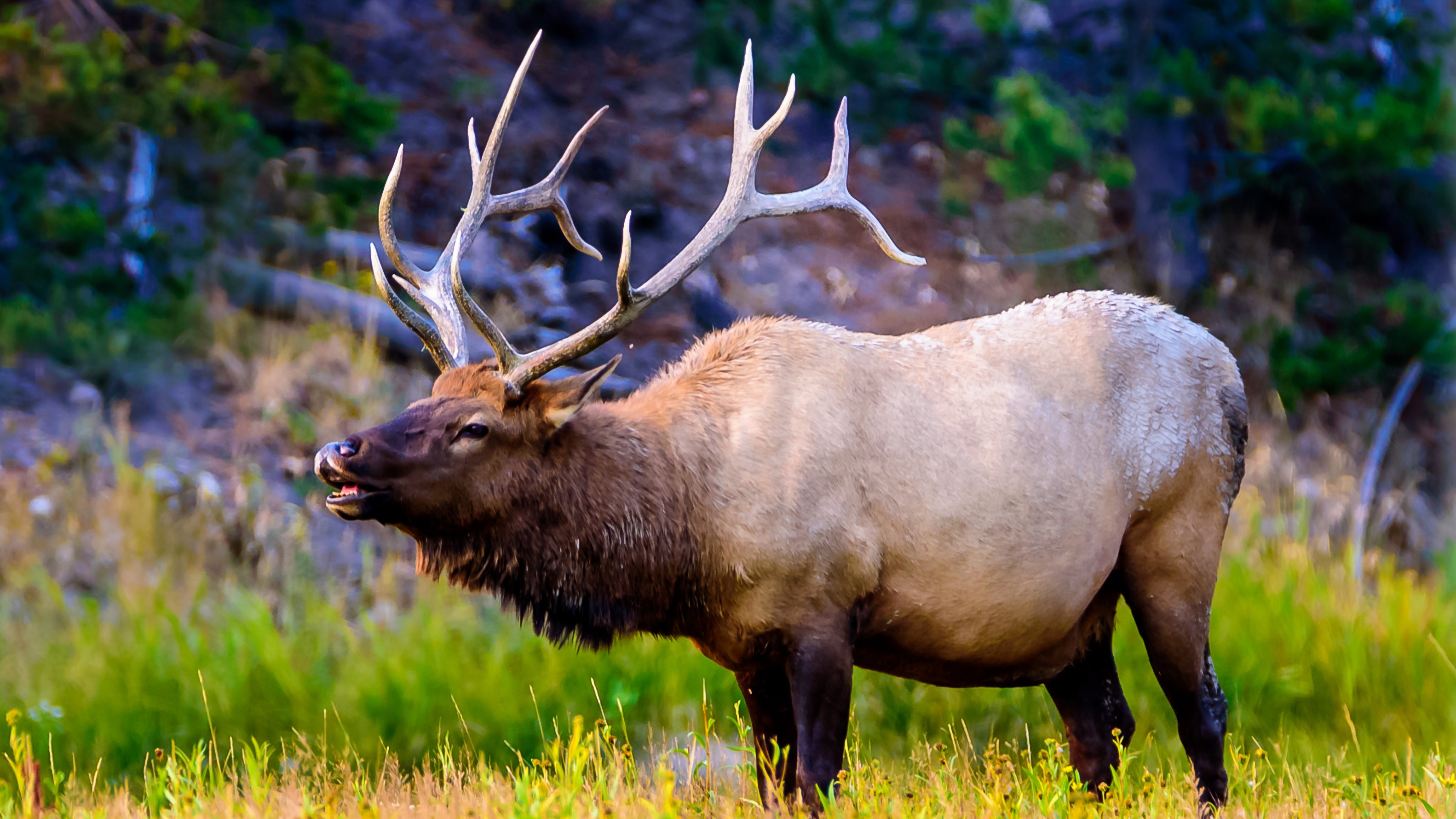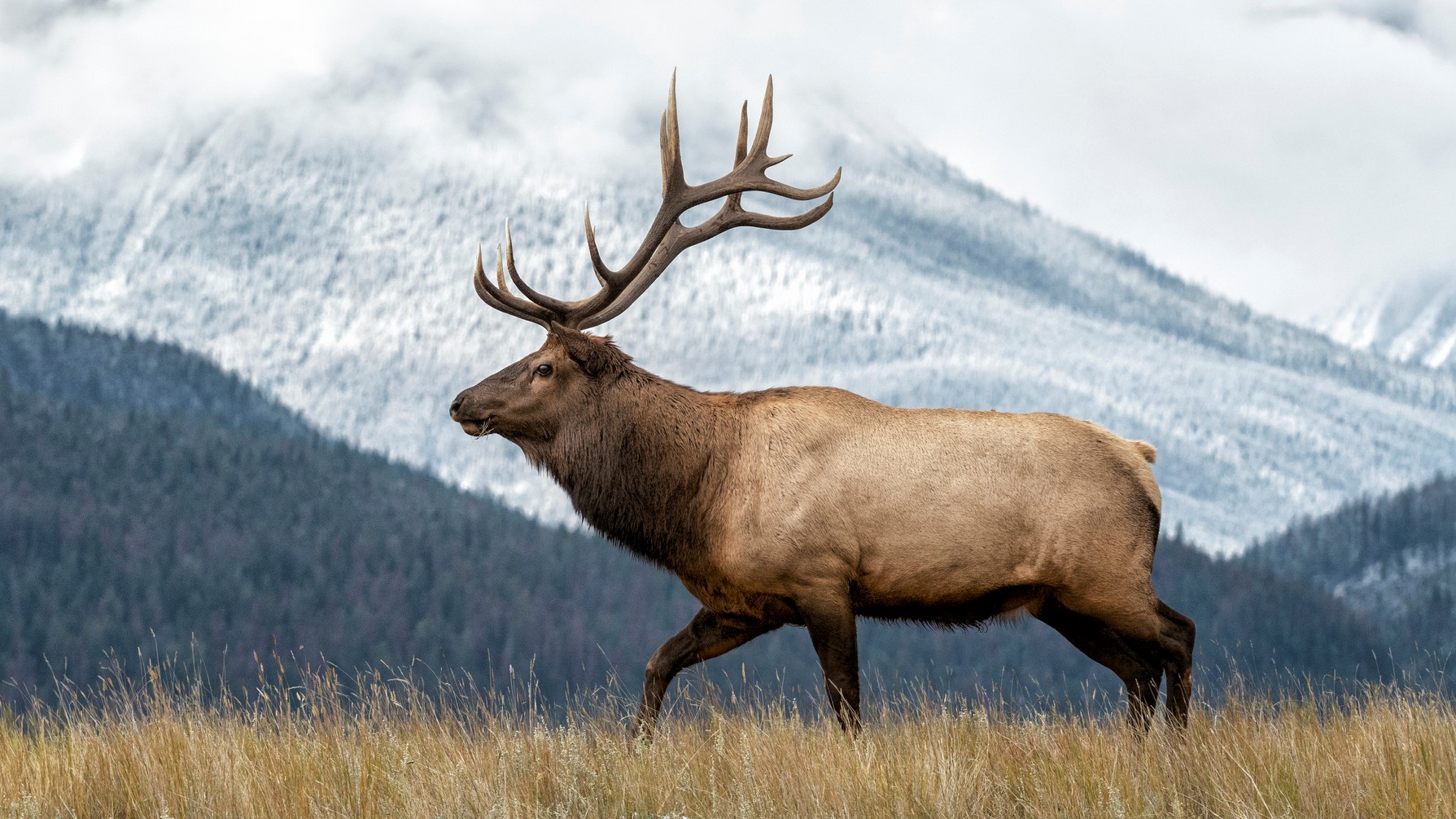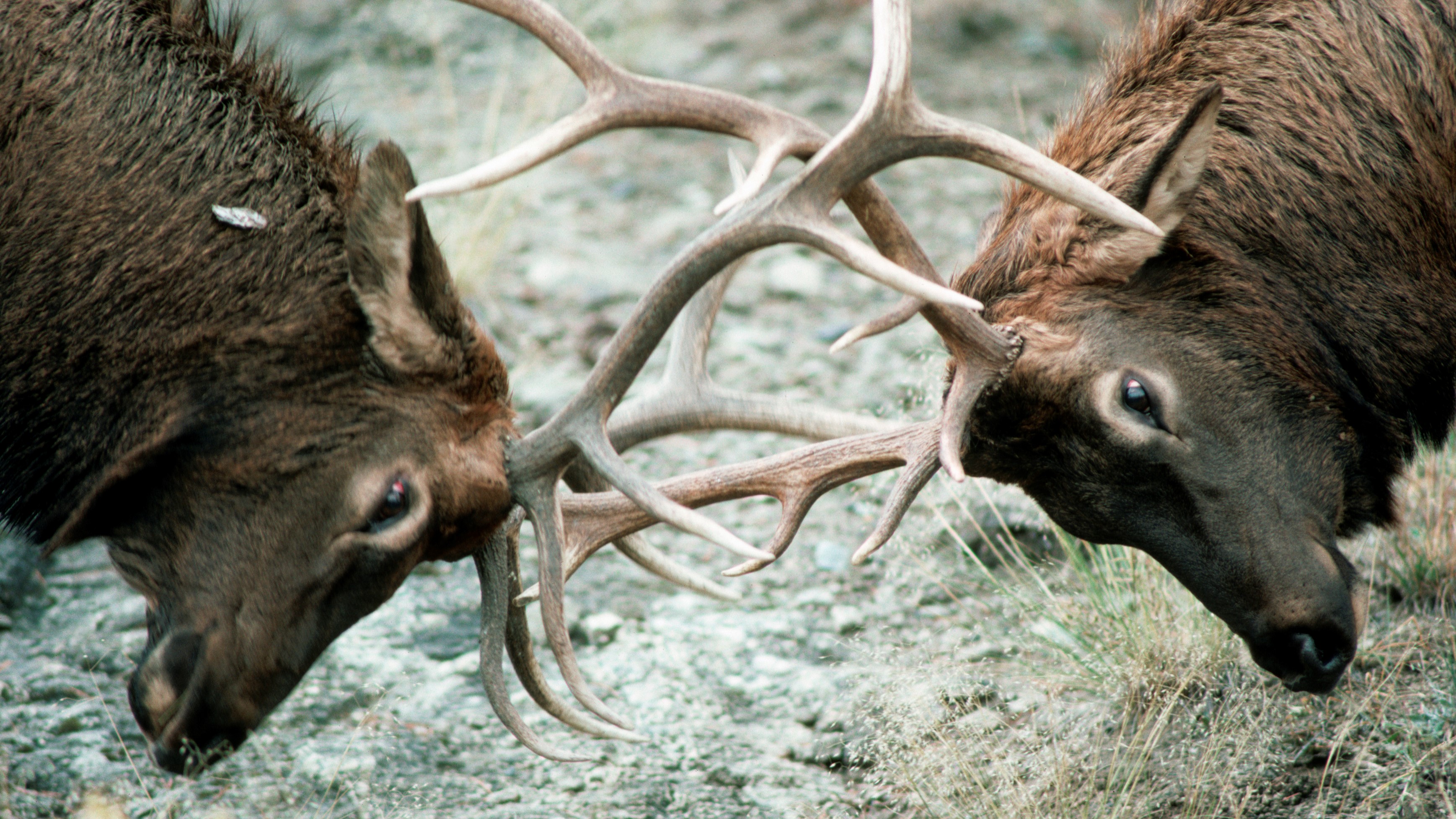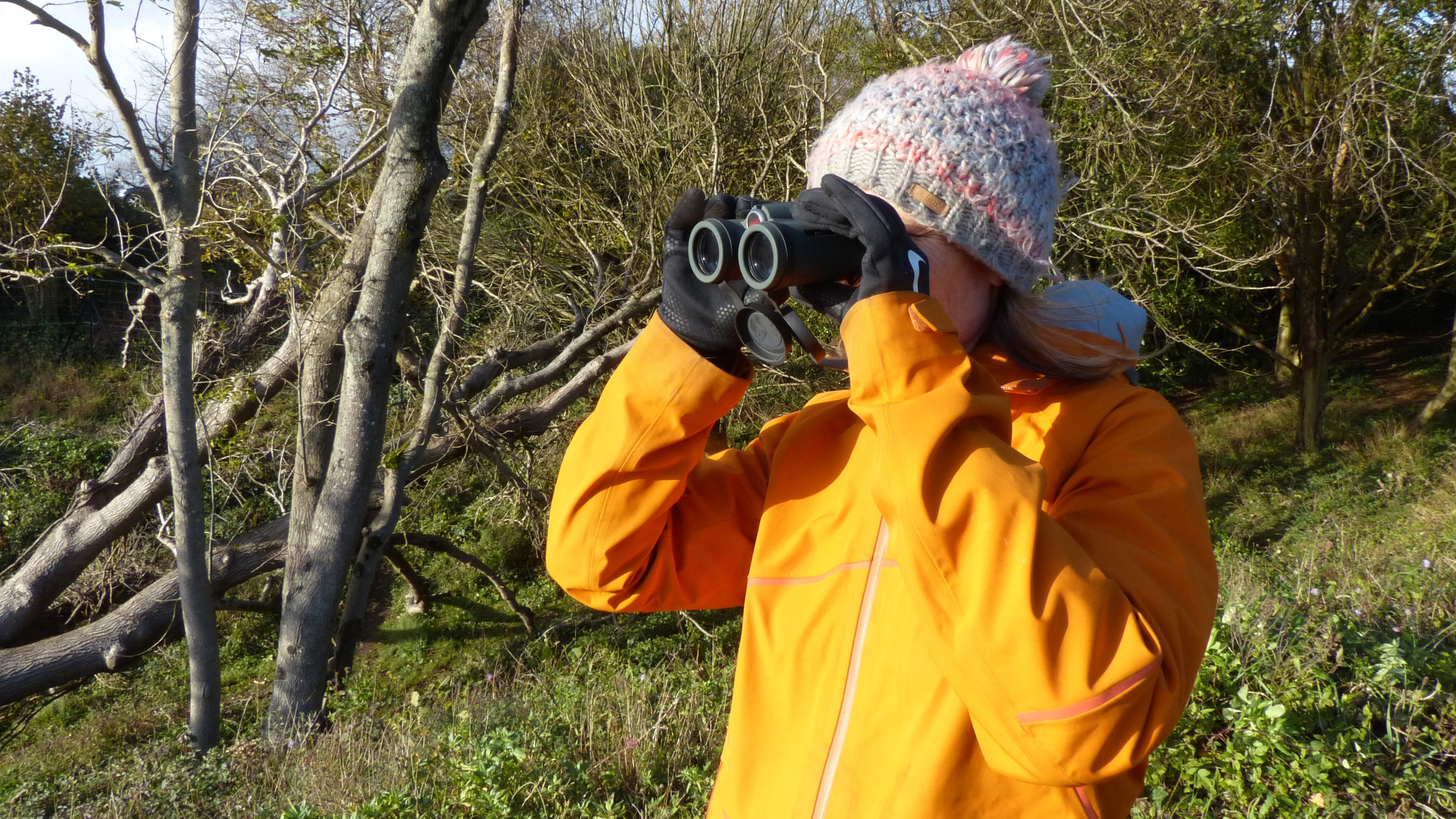Why do elk bugle in the fall?
Why do we only hear the curious call of these magnificent beasts between summer and winter?

If you’re lucky enough to spend your autumn days exploring the Rocky Mountains in your hiking boots, there’s a good chance that you’ll have been enchanted by the haunting sounds of elk bugling drifting across the valley. But why do elk bugle, anyway, and why do they only do it in the fall?
There are plenty of other animals whose calls you hear throughout the year – the shook shook of a Steller’s Jay or the yip yip of a coyote at night, for example. The wailing and grunting of an elk bugling, though? That heralds a very specific time of year, and it’s only when summer’s heat fades into autumn’s cool winds. Even though you may see elk year-round, you will only hear this sound in the fall, and it's not because they're mourning the end of summer.

Why do elk bugle in the fall?
Bugling is the term used to describe a sound that bull elk make during mating season, otherwise known as rutting season. Elk rutting season occurs between mid-August through mid-October, depending on your location. Cow elks are only in heat for 24 hours, after which they won’t be receptive to mating again for another 20 days, so the bulls pull out all the stops during this brief window of opportunity.
Bull elk engage in an intricate display of pageantry to attract a mate including gathering cow elk together in small groups called harems, dousing themselves in the heady scent of mud and urine, locking antlers with other bulls in fight and sonorous bugling. Bugling appears to be a way to show dominance over other bulls, mark territory and even impress cows. It is, perhaps, the elk equivalent of telling jokes or holding the door open and it is designed to attract a mate.

What time of day do elk bugle the most?
Elk are most active during evening hours around dusk during rutting season, followed by the early morning at dawn, so it will be during these hours that you’re most likely to hear elk bugling. If you’re keen to witness bull elk engaged in their mating rituals, which can be an amazing sight to behold, grab your binoculars and a warm fleece jacket since it can be chilly at these times and follow the sounds of bugling.
Once you get your eyes on some elk, keep a good distance and enjoy the display from afar. Don’t take your dogs on these adventures though, because elk are known to strongly dislike canines.

How far away can you hear elk bugling?
According to a 2010 study, elk bugling can reach levels of 70 decibels at a distance of 10 meters away. That’s not as noisy as a motorcycle engine, but it could be as loud as your vacuum cleaner, and according to the CDC any noise over 70 decibels could damage your hearing if you’re exposed to it over a prolonged period.
All the latest inspiration, tips and guides to help you plan your next Advnture!
That’s not an issue though. You’re not likely to be within 10 meters of an elk and they only bugle for short periods, so what you really want to know is how far away is that elk I can hear bugling? The answer is that, in an open space without lots of trees or mountains to block the sound, the breeze could carry the sound of an elk bugling to your ears from a couple of miles away. Just because you can hear it, doesn’t mean it’s dangerously close, but use your eyes to confirm that and, if you’re hiking with your dog, get it on leash when you hear bugling.
Julia Clarke is a staff writer for Advnture.com and the author of the book Restorative Yoga for Beginners. She loves to explore mountains on foot, bike, skis and belay and then recover on the the yoga mat. Julia graduated with a degree in journalism in 2004 and spent eight years working as a radio presenter in Kansas City, Vermont, Boston and New York City before discovering the joys of the Rocky Mountains. She then detoured west to Colorado and enjoyed 11 years teaching yoga in Vail before returning to her hometown of Glasgow, Scotland in 2020 to focus on family and writing.

